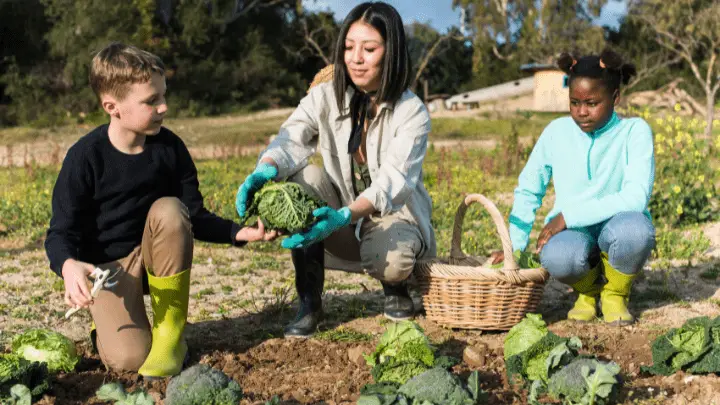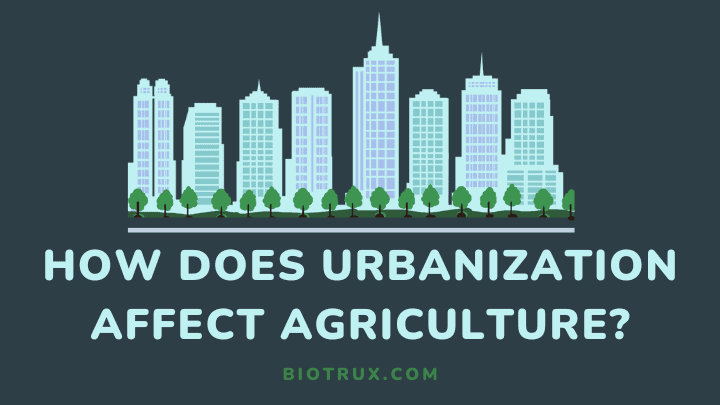With the world’s population expected to reach about 9.7 billion by 2050, it’s no surprise that urbanization is a hot topic. In today’s modern world, urbanization profoundly affects agriculture.
From increased competition for land to environmental challenges, many of the world’s most fertile agricultural regions are being affected by urban sprawl. But what does this mean for farmers and their ability to access resources?
How is urbanization changing the face of agriculture? In this article, you’ll explore how urbanization affects agriculture and its implications and mitigation for future agricultural sustainability.
The Relationship Between Urbanization and Agriculture
Urbanization and agriculture are closely connected. As cities grow, more and more land is required for urban development, leaving less land available for agricultural use. This can increase food production costs and decrease access to fresh produce in urban areas.
On the other hand, urban areas can provide opportunities for farmers to sell their products directly to city dwellers, creating a more efficient food distribution system.
Hence, we must find ways to produce food within an urban context sustainably. Urbanization affects agriculture, so they must share this synergistic relationship if both sides are to prosper in the future.
How Urbanization Affects Agricultural Land
1. Reduction in agricultural land
The growth of urban areas decreases the amount of agricultural land available for food production.
This is because more land is needed to build houses and other infrastructure as people move to cities, leading to less space for farming.
Farmers are struggling to meet the demands of an ever-growing population because of land conversion from agricultural to urban areas.
2. Soil and water pollution
Urbanization greatly affects agriculture in terms of soil and water pollution. As cities grow, more land is used to house people and industry, often releasing large amounts of pollutants into the environment.
This air and water pollution then seeps into nearby farmland, damaging the soil and making it difficult for crops to grow properly.
Additionally, runoff from paved surfaces can introduce sediment and chemicals into rivers and other bodies of water, endangering aquatic life and introducing toxins into the soil.
3. Land fragmentation
Urbanization has had a significant impact on agricultural land, including the fragmentation of large areas of farmland. As cities expand, they often divide tracts of land into smaller sections, creating pockets too small or disconnected to support viable farming operations.
This can lead to reduced crop yields, the loss of certain species, and soil and water quality degradation. Fragmentation may also disrupt natural ecosystems, increasing the risk of flooding, drought, and other problems.
How Urbanization Affects Agricultural Practices
1. Changes in farming practices
As cities have grown, farmland has been consumed, leading to large decreases in land available for farming.
Conventional farming methods are also becoming more difficult due to a lack of space; an increase in population and the resulting need for housing mean that large-scale farming is no longer viable.
New methods such as rooftop farming, hydroponics, aquaculture, and vertical farming are being adopted to use limited space and resources efficiently. As a result, farmers are adapting their practices to respond to this growing demand and supply chain changes.
2. Loss of traditional farming knowledge
The traditional knowledge that comes with generations of farming experience is being lost as more and more people move to urban areas. This knowledge contains valuable information about utilizing land and resources to maximize yields.
However, with fewer people on farms, this knowledge is disappearing. This shift in land use has caused a break from traditional farming methods and resulted in less efficient farms relying more on synthetic fertilizers and pesticides.
Urbanization has also increased the demand for processed and packaged foods, which can be unsustainable for the environment and farmers.
3. Increase in mechanization and changes in crop choices
Urbanization has had a dramatic effect on agricultural practices. With more and more people living in urban areas comes an increased need for food, leading to the mechanization of farming practices.
This involves using technology and machinery, such as soil and water sensors, minichromosomal technology, and more, to produce more crops with less manpower and space.
The crop types have shifted from traditional staples like wheat and corn to blueberries, herbs, and edible flowers.
How Urbanization Affects Agricultural Economics
1. Increase in land prices and higher labor cost
Urbanization often leads to increased land prices and higher labor costs for agricultural production. This is due to the higher demand for land as more people move into cities and the cost of hiring workers in these areas.
As a result, farmers need to invest more in their operations, leading to fewer returns and lower profits. In some cases, this might lead them to prioritize bigger yields over sustainability, resulting in the overuse of chemicals or faulty irrigation systems.
2. Increase in demand for food
As cities grow, more people move in, and demand for various goods increases. This increased demand is felt strongly in the agricultural sector, with food being one of the most sought-after goods.
Urbanization has pressured the agricultural industry to produce more food to meet this growing demand. This has resulted in a shift in focus to mechanized farming and large-scale production methods to meet the needs of an ever-growing population.
3. Increase in competition for resources
As cities become larger, competition for resources and land increases. In agricultural economics, this is one of the most significant effects of urbanization. With more people living in cities, there is a growing demand for resources and agricultural space.
This creates an imbalance in supply and demand and forces farmers to compete with each other for limited resources. As a result, food prices can go up, and the viability of small farms can be threatened.
Mitigating How Urbanization Affects Agriculture

1. Urban agriculture
Urban agriculture is an effective way of mitigating the damaging effects of urbanization on agriculture. It involves growing food in and around cities, often using existing infrastructure such as rooftops, backyards, or vacant lots.
Urban gardens provide fresh produce to underserved neighborhoods while encouraging sustainable practices. In addition to providing healthy food options, urban farms improve air quality, reduce noise pollution, create green spaces, and increase community engagement.
Urban agriculture is an important strategy for promoting healthy, vibrant, smart cities and keeping our farmers farming.
2. Conservation and preservation of agricultural land
To help mitigate how urbanization affects agriculture, preserving and conserving agricultural land is essential. For example, preserving permanent cropland can ensure that crop yields remain consistent year after year.
Also, limiting erosion and avoiding overfertilization can prevent soil degradation and preserve topsoil, while protecting biodiversity-rich areas can conserve animal life.
We can work towards creating a more sustainable agricultural system by taking these steps to conserve and preserve agricultural land.
3. Sustainable farming practices
Sustainable farming is the practice of cultivating crops, raising livestock, and managing land in a way that preserves the environment and conserves its resources.
From improving soil fertility through crop rotation and organic matter to preserving wildlife habitat, sustainable farming practices can help mitigate this effect.
Farmers can ensure that their land remains productive for generations to come by taking these steps. This will protect rural livelihoods, improve food security, and prevent further environmental degradation.
FAQs
Does agriculture belong in urban areas?
Urban areas may not always suit traditional large-scale agriculture due to limited space and potential pollution concerns. Therefore, a balance must be struck between urban development and agriculture.
Can urbanization and agriculture coexist?
Yes, urbanization and agriculture can coexist through urban agriculture, which involves growing crops and raising animals in urban areas, and sustainable farming practices that reduce the negative impact of urbanization on agriculture.
What are the challenges faced by farmers in urban areas?
Farmers in urban areas face challenges such as limited land availability, high land prices, competition for resources, pollution, and changing market demands.
What is the importance of agriculture in society?
Agriculture provides us with food, fuel, materials for industry, and a livelihood for countless people. Without agriculture, our population and economies would suffer greatly as we rely on it for sustenance, creating jobs, and producing materials for clothing and manufacturing.
Wrapping Up
Urbanization is having an unprecedented impact on the global agricultural industry. As cities expand to accommodate larger populations, agricultural production takes more land away. This has led to decreased crop yields, reduced soil fertility, and higher prices for farmers.
On top of this, urban areas often bring air and water pollution that can damage crops, leading to lower-quality produce.
But it’s not all bad news – some towns have capitalized on their urban setting by turning their rooftops into verdant gardens or using vertical farming techniques.
With the right planning and technology, urban agriculture can be a key part of the solution to our planet’s pressing agricultural challenges. It’s time to start reimagining our cities as places of food production where innovation and sustainability go hand in hand.
Learn more about the factors that led to urbanization.
Thanks for reading.
